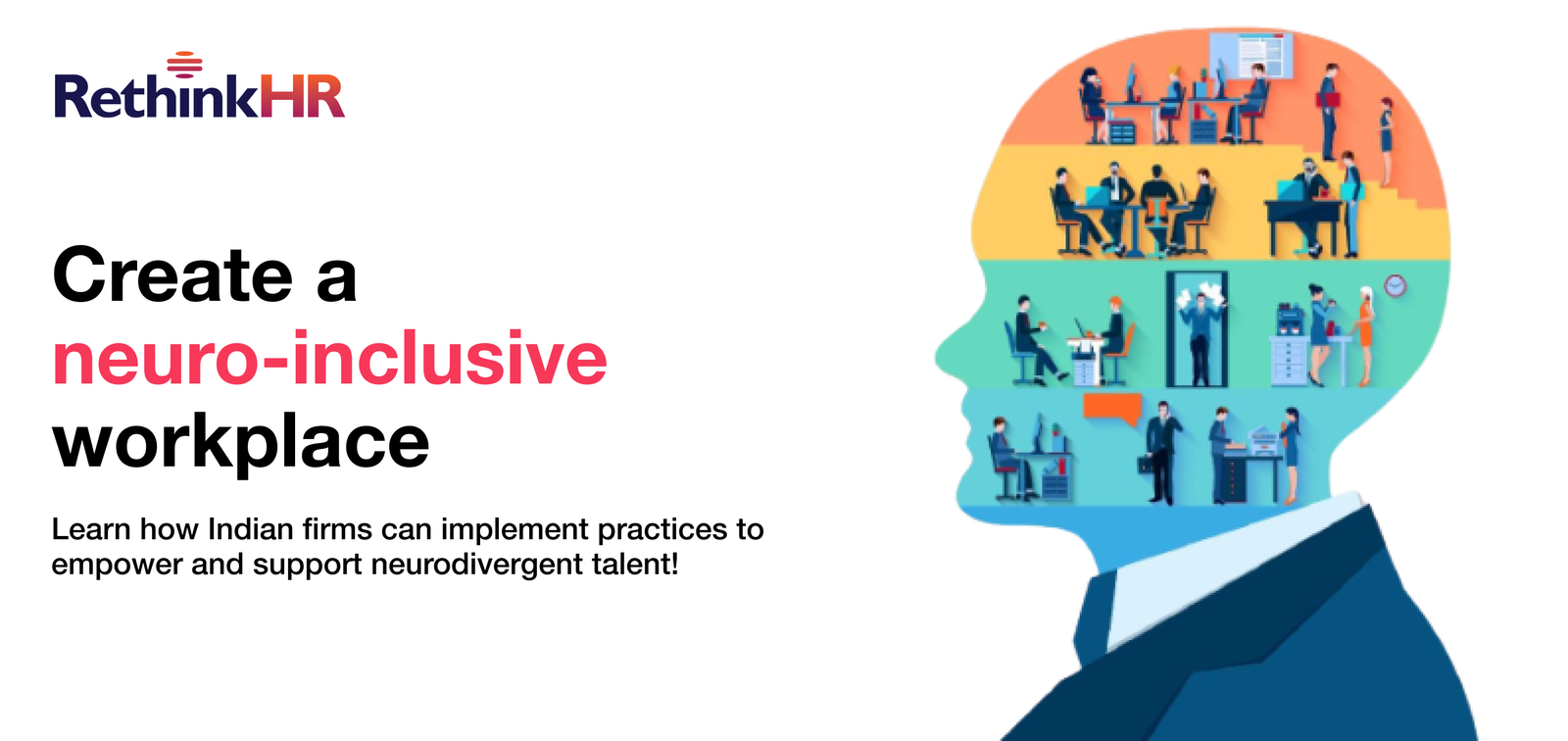In today’s progressive work environment, Neurodiversity Inclusion has become an essential component of diversity, equity, and inclusion (DEI) strategies for Indian firms. Neurodiversity refers to the natural variations in human brain function and behavioral traits, encompassing conditions like autism, ADHD, dyslexia, and other cognitive differences. By building inclusive practices that cater to neurodiverse individuals, companies can unlock unique talents, foster innovation, and promote a more equitable workplace.
Understanding the Imperative for Neurodiversity Inclusion
Approximately 15-20% of the world’s population is neurodiverse, with nearly 2 million individuals in India showing signs of neurodivergence. Despite this significant presence, many neurodiverse individuals face challenges in finding and sustaining employment due to biases, lack of awareness, and rigid work environments. Embracing Neurodiversity Inclusion is not only a matter of social justice, as emphasized by The Rights of Persons with Disabilities Act, 2016, but also a strategic business imperative.
Key Components of Neurodiversity Inclusion Strategies
- Redefining Recruitment Processes for Neurodiversity Inclusion: Traditional recruitment methods often fail to accurately assess the skills and potential of neurodiverse candidates.
- Implementing neurodiverse-friendly recruitment procedures, such as task-based assessments and simulations, can provide a more accurate evaluation of candidates’ abilities.
- Collaborating with advocates and NGOs can help develop practical assessments that focus on real-world applications and problem-solving skills.
- Creating Supportive Workplaces through Neurodiversity Inclusion: Workplaces must be adapted to accommodate the unique needs of neurodiverse employees.
- Providing workplace flexibilities, such as flexible schedules and remote work options, can create a more comfortable and productive environment.
- Designing physical spaces that minimize sensory overload, such as quiet rooms and adjustable lighting, can help neurodiverse individuals manage their sensory sensitivities.
- Promoting Awareness and Education on Neurodiversity Inclusion: Addressing biases and misconceptions about neurodiversity is crucial for fostering a culture of acceptance.
- Conducting workshops and training sessions can sensitize employees about neurodiversity, promoting understanding and empathy.
- Encouraging open dialogue and sharing personal experiences can help break down stigma and build a more inclusive community.
The Pivotal Role of Leadership in Driving Neurodiversity Inclusion
Commitment from top leadership is essential for driving Neurodiversity Inclusion initiatives.
- Championing Neurodiversity Inclusion: C-suite leaders must actively advocate for neurodiversity representation, communicating the goals of such initiatives and measuring their impact.
- Allocating Resources for Neurodiversity Inclusion: Investing in accommodations, training programs, and support services demonstrates a commitment to creating an inclusive workplace.
- Measuring Impact of Neurodiversity Inclusion: Tracking key metrics, such as hiring rates, retention rates, and employee satisfaction, can help assess the effectiveness of neurodiversity initiatives.
Case Studies: Successful Implementation of Neurodiversity Inclusion in Indian Firms
Several Indian companies are leading the way in Neurodiversity Inclusion:
- SAP’s “Autism at Work” Program: This program focuses on matching neurodivergent individuals’ unique talents and abilities with suitable roles.
- EY’s Neuro-Diverse Centre of Excellence (NCoE) in India: EY has implemented a structured hiring process, providing training and grooming to neurodiverse candidates for roles in areas such as data leakage prevention.
- Accenture’s Internship Program: Accenture has run pilot programs to hire people with autism spectrum disorder through an internship program, providing medical insurance coverage for therapies key to their emotional, behavioral, and professional development.
- Wells Fargo’s Neurodiversity Program: With the help of community partner EnAble India, Wells Fargo uses a train-intern-hire model to bring in neurodiverse individuals in technology, operations, and finance.
Addressing Challenges and Promoting Sustainable Neurodiversity Inclusion
Despite growing awareness, challenges remain in promoting Neurodiversity Inclusion.
- Attitudinal Barriers: Overcoming attitudinal barriers and misconceptions about neurodiversity requires ongoing education and awareness efforts.
- Limited Resources: Providing adequate accommodations and support services may require significant investment, particularly for smaller companies.
- Skilling and Training: Ensuring that neurodiverse individuals have access to appropriate skilling and training opportunities is crucial for their long-term success.
The Future of Neurodiversity Inclusion: Trends to Watch
As Neurodiversity Inclusion gains momentum, several key trends are expected to shape its future:
- Increased Collaboration: Partnerships between companies, NGOs, and educational institutions will play a crucial role in promoting neurodiversity and providing support to neurodiverse individuals.
- Technological Advancements: Assistive technologies and AI-powered tools will help create more accessible and inclusive workplaces.
- Policy Changes: Government initiatives and regulations will further promote the rights and inclusion of neurodiverse individuals in the workforce.
Conclusion
Embracing Neurodiversity Inclusion is not only a social responsibility but also a strategic business imperative for Indian firms. By creating inclusive practices that value the unique talents and perspectives of neurodiverse individuals, companies can foster innovation, improve employee engagement, and gain a competitive edge in the global market. As India continues to strive towards becoming a more inclusive society, prioritizing Neurodiversity Inclusion will be essential for unlocking the full potential of its diverse workforce and building a brighter future for all.

